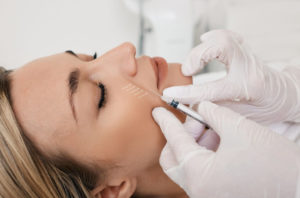If you’re struggling with hair loss, you’re not alone. Hair loss is a common concern affecting over 80 million Americans, including approximately 50 million men and 30 million women. Factors such as aging, stress, genetics, hormonal changes, nutritional deficiencies, and autoimmune conditions can all contribute to hair thinning and baldness. While the emotional impact of hair loss can be profound, innovative treatments like platelet-rich plasma PRP work for hair loss and offer a promising solution. Here’s what you need to know about PRP and how it works to restore hair growth.
How PRP Works for Hair Loss
PRP therapy harnesses the healing properties of your own blood to stimulate hair follicles and promote healthy hair growth. The process begins by drawing a small sample of your blood, which is then placed in a centrifuge to separate the plasma rich in growth factors. This concentrated plasma is injected into areas of the scalp affected by hair thinning or loss.
Growth factors in PRP stimulate dormant hair follicles, strengthen existing ones, and encourage new growth by improving blood circulation and activating stem cells. Often combined with microneedling for enhanced results, PRP also promotes a healthier scalp environment, making it an effective treatment for conditions like androgenetic alopecia (male and female pattern baldness) and alopecia areata.
The Effectiveness of PRP for Hair Loss
PRP is considered one of the most effective non-surgical treatments for hair loss. By activating natural growth factors, PRP strengthens and thickens hair follicles, resulting in healthier, more robust hair. Over time, patients notice increased hair density, reduced thinning, and improved scalp coverage.
Scientific studies support PRP’s effectiveness, particularly for early-stage hair thinning. While results vary, many patients see noticeable improvements after three to six treatments spaced several weeks apart. Maintenance sessions are typically recommended to sustain long-term results.
Factors That Influence PRP Results
While PRP is effective, several factors can impact individual outcomes, including:
- Age: Younger patients or those in the early stages of hair loss may experience better results.
- Platelet Quality: The concentration and quality of platelets in your blood play a significant role in treatment efficacy.
- Overall Health: Conditions like anemia or chronic illness can affect results.
- Injection Technique: The skill and experience of your provider are crucial for optimal outcomes.
- Lifestyle Habits: A healthy diet, reduced stress, and proper hair care can enhance PRP’s benefits.
To maximize your results, follow your provider’s recommendations, which may include using specialized shampoos, topical treatments, and supplements that promote hair health.
PRP vs. Other Hair Loss Treatments
Compared to traditional methods, PRP offers several advantages:
- Topical Minoxidil: While effective, minoxidil requires consistent daily application and may cause scalp irritation.
- Oral Finasteride: Effective for men, finasteride can have side effects like decreased libido and is not recommended for women of childbearing age.
- Surgical Hair Transplants: While permanent, hair transplants involve higher costs, longer recovery, and the risk of scarring.
PRP stands out as a minimally invasive, natural option with virtually no downtime and minimal risk of side effects. Since PRP uses your own blood, the risk of allergic reactions is eliminated.
Realistic Expectations for PRP Hair Loss Treatment
PRP is not a quick fix but a gradual process that delivers cumulative results. Most patients require an initial series of three to six treatments, spaced four to six weeks apart, to achieve optimal results. Maintenance sessions every six to twelve months help preserve the effects.
While PRP can significantly improve hair density and thickness, it is most effective for early to moderate hair loss. Patients with advanced hair loss or scarring alopecia may benefit from alternative treatments or a combination approach.
FAQs
Does PRP treatment work for all types of hair loss?
PRP is particularly effective for androgenetic alopecia, alopecia areata, and early-stage hair thinning. However, it may be less effective for scarring alopecia or hair loss caused by certain medical conditions.
How soon can I expect to see results from PRP treatment?
Initial changes may be noticeable within weeks of your first few treatments, but optimal results typically appear after completing the full treatment series. Results are long-lasting with proper maintenance.
How often do I need to get PRP injections to treat my hair loss?
Most patients undergo two to three sessions every four to six weeks initially, followed by annual maintenance treatments to sustain the results.
Take the Next Step
If you’re ready to combat hair loss and restore your confidence, PRP therapy may be the solution you’ve been looking for. At Advanced MD Aesthetics, our skilled specialists use cutting-edge PRP techniques to help you achieve healthier, fuller hair. Schedule a consultation today to learn more and take the first step toward a rejuvenated look!









